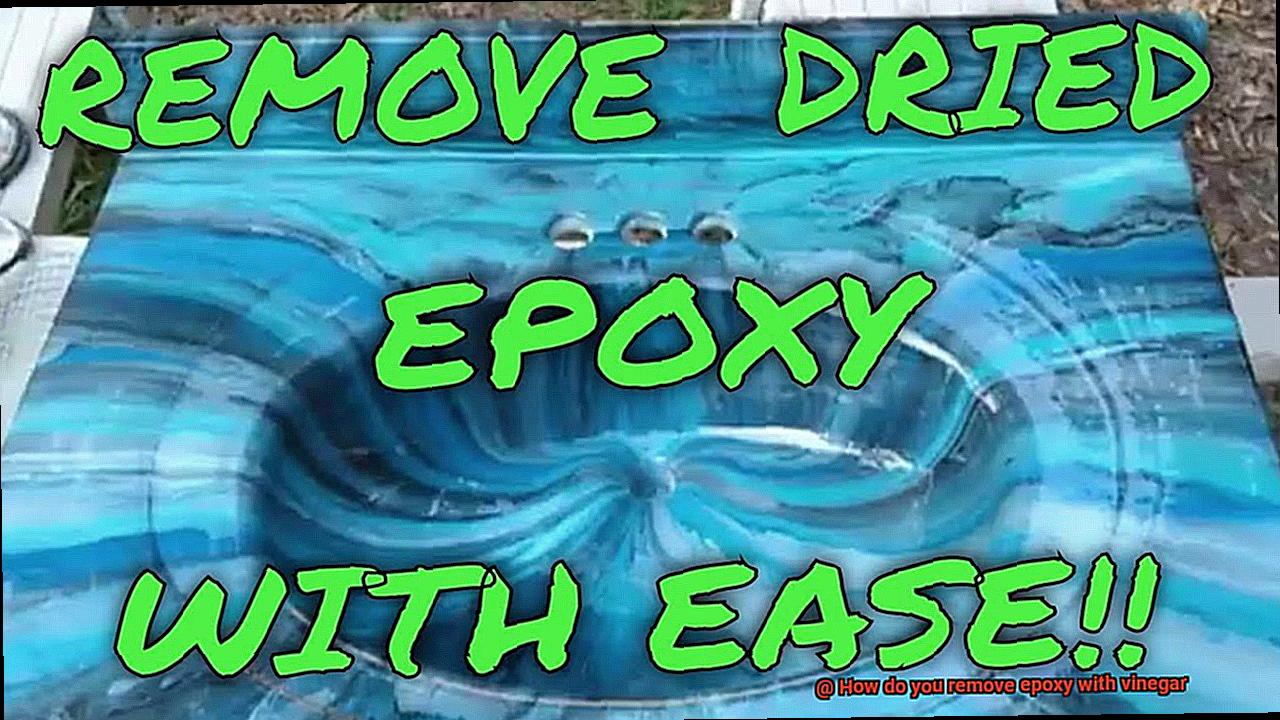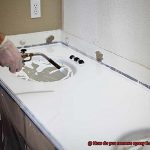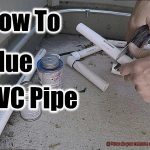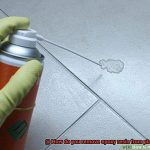Have you ever found yourself struggling to remove epoxy residue from surfaces? It can be a real pain, even for seasoned DIYers. But fear not, because there’s a simple solution already in your kitchen – vinegar.
Yes, that’s right – the same stuff you use to dress your salad can also help you clean up after your latest project. Vinegar has been used for centuries as a natural cleaning agent and stain remover, and it still works just as well today.
In this blog post, we’re going to show you how to use vinegar to remove epoxy residue from surfaces. We’ll walk you through the step-by-step process, including what materials and tools you’ll need. And we’ll share some helpful tips along the way to ensure success.
You might be wondering how vinegar works its magic on epoxy. Well, it turns out that vinegar is acidic enough to break down the chemical bonds in epoxy without damaging the surface underneath. Plus, it’s a safe and low-cost option compared to other harsh chemicals.
So whether you’re dealing with a small spill or a major cleanup job, removing epoxy with vinegar is an excellent solution. So sit back, relax with your favorite beverage (may we suggest something vinegary?), and let’s dive into the world of vinegar and epoxy cleaning together.
What is Epoxy?
Contents
It’s a two-part mixture consisting of a resin and a hardener. Once combined, these components create an incredibly robust bond that can join together a wide variety of materials, including metal, wood, and plastic.
Epoxy is a popular choice for construction, automotive, and manufacturing industries due to its exceptional strength and durability. It can withstand harsh environments and extreme conditions, making it an ideal adhesive for even the toughest jobs.
This incredible adhesive comes in various forms such as liquid, paste, and putty. The curing time varies depending on the type and brand, but it generally takes anywhere from a few hours to several days to fully harden.
While epoxy is undoubtedly useful in many applications, removing it can be challenging, particularly when it has dried and hardened. Fortunately, vinegar is a potential solution for removing epoxy.
To use vinegar for removing epoxy, create a solution of equal parts vinegar and warm water. Apply the solution to the affected area using a spray bottle or cloth and allow it to sit for at least 30 minutes. The vinegar will break down the chemical bonds in the epoxy, making it easier to remove with a scraper or putty knife.
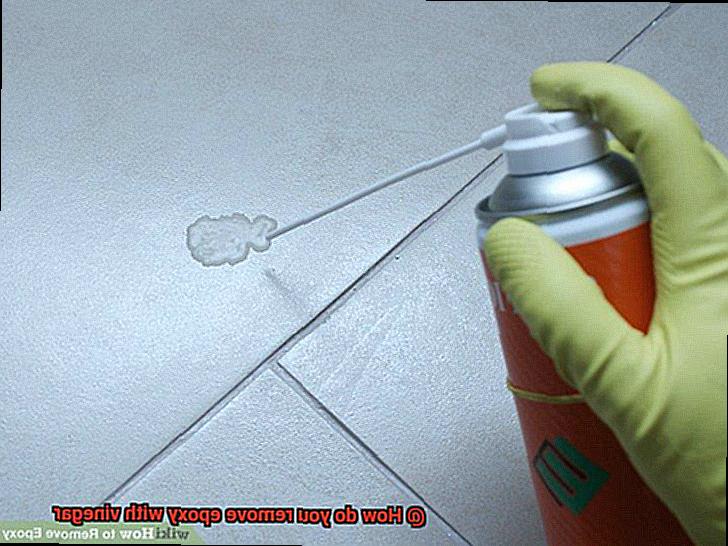
It’s important to note that vinegar may not work for all types of epoxy. For stubborn or old epoxy or large areas, you may need to use a commercial epoxy remover or consult with a professional.
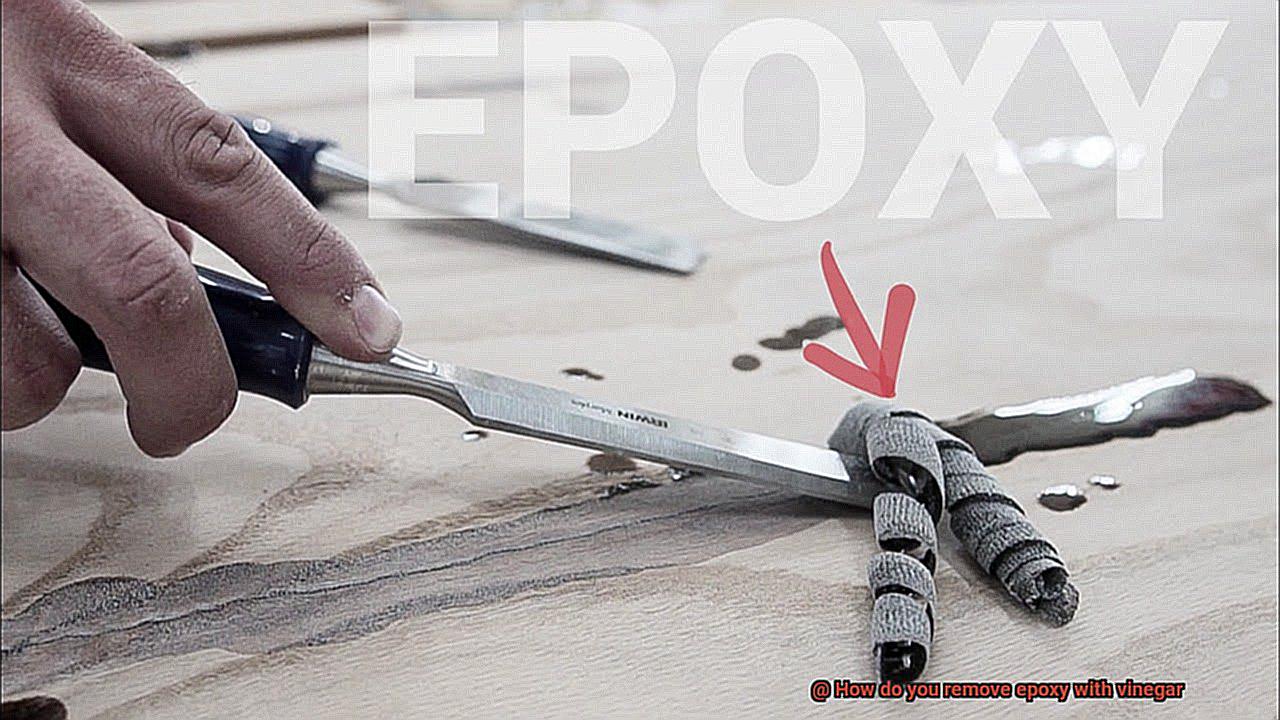
Why Use Vinegar to Remove Epoxy?
Vinegar is a popular solution for removing epoxy due to its non-toxic and eco-friendly properties.
Firstly, vinegar is a natural acid that can dissolve the bond between the epoxy and the surface it is adhered to, making it easier to remove. It’s a safer alternative to harsh chemical solvents that can cause health risks. Plus, vinegar is easily accessible and inexpensive, making it a convenient solution for those on a budget.
Secondly, vinegar is versatile and won’t cause damage to surfaces. It can safely be used on wood, metal, concrete, and other surfaces without leaving marks or stains. This makes it a more reliable solution for removing epoxy from different types of surfaces.
Another reason why vinegar is an excellent option for removing epoxy is that it’s eco-friendly. It doesn’t emit toxic fumes or have harmful effects on the environment, making it a more sustainable choice.
Preparing the Vinegar Solution
As an expert in preparing the vinegar solution, I’m here to guide you through the process of using this eco-friendly and budget-friendly alternative.
To make the perfect vinegar solution, you’ll need white vinegar, a spray bottle, a plastic scraper, and a clean cloth. Fill the spray bottle with white vinegar and give it a good shake to ensure that the solution is mixed thoroughly. For a paste-like consistency, mix vinegar with baking soda. But be careful not to overdo it as it will cause a chemical reaction that produces carbon dioxide.
Before applying the vinegar solution, ensure that the surface is clean and free of debris or dirt. Once ready, spray the mixture generously on the epoxy and let it sit for at least 30 minutes. The longer you let the solution sit, the easier it will be to remove the epoxy.
When the epoxy has softened, use a plastic scraper to gently scrape it off. If there are any remaining bits of epoxy, apply more vinegar solution and repeat the process until all of the epoxy has been removed. It’s important to note that vinegar may not work on all types of epoxy or surfaces that are sensitive to acid. Therefore, test it on a small area first before using it on larger surfaces.
Applying the Solution
Don’t worry, because the solution might be as easy as grabbing some white vinegar. As a seasoned expert in applying vinegar to remove epoxy, I’m here to walk you through the process of restoring your surfaces to their former glory.
First, let’s gather the necessary materials. You’ll need white vinegar, a plastic scraper or putty knife, and a clean cloth or sponge. Keep in mind that vinegar is most effective on uncured or partially cured epoxy, so choose your materials accordingly.
Once you have your materials, pour the white vinegar onto the affected area and let it sit for 15-20 minutes. During this time, the vinegar’s acidic properties will break down the epoxy, making it easier to remove. After the allotted time has passed, use your plastic scraper or putty knife to gently remove the softened epoxy. Be sure not to apply too much pressure and damage the surface underneath.
Once you’ve removed most of the epoxy, use a clean cloth or sponge soaked in vinegar to wipe away any remaining residue. Repeat this process until all traces of epoxy are gone.
It’s important to note that not all surfaces and materials will react positively to vinegar. Always test a small, inconspicuous area first before applying vinegar to a larger area to prevent any damage.
Waiting for the Solution to Work Its Magic
Patience is essential when it comes to using vinegar as a solution for removing epoxy.
Applying vinegar onto the affected area is only the first step. Now comes the waiting game. The vinegar needs time to work its magic and break down the epoxy. The amount of time it takes for the vinegar to penetrate and break down the adhesive varies, depending on factors such as the type of epoxy and the thickness of the layer. Typically, several hours or even overnight are needed.
Disturbing or touching the surface during this waiting period can interrupt the chemical reaction and slow down the process. To ensure that the vinegar remains in contact with the epoxy, cover the area with plastic wrap or a damp cloth. This will prevent any movement or handling of the surface that could prolong the process.
The type of epoxy you’re dealing with matters too. Different epoxies have varying levels of adhesion and chemical composition, which means that some may require longer soaking times than others to break down completely. It’s important to research the type of epoxy you’re dealing with and adjust your waiting time accordingly.
Thicker layers of epoxy require more time for the vinegar to penetrate and break down the adhesive. While it can be frustrating to wait for the solution to work its magic, rushing this process can result in incomplete removal of the epoxy and leave behind unsightly residue that may require further treatment.
Removing the Softened Epoxy
First things first, it’s important to note that vinegar is an effective method for softening epoxy, but it won’t dissolve it entirely. So, after applying the vinegar, you’ll need to use mechanical removal methods like a scraper or sandpaper to finish the job. Keep in mind that some types of epoxy may be highly resistant to solvents like vinegar. In such cases, it may be necessary to try a stronger solvent or seek professional help.
Now, onto the steps. Here’s what you need to do:
Step 1: Gentle Scrape
Start by using a plastic scraper or putty knife to gently scrape away any softened epoxy. Be careful not to damage any surrounding areas or surfaces.
Step 2: Sand Away
If the epoxy is still difficult to remove, try using sandpaper to sand away the remaining adhesive. This will help smooth out the surface and make it easier to remove any remaining residue.
Step 3: Clean Thoroughly
After removing the softened epoxy, take care to clean the area thoroughly with soap and water. Any remaining residue can be removed with acetone or another solvent.
Remember, when working with epoxy and solvents, safety should always be your top priority. Wear appropriate safety equipment like gloves and eye protection.
When Vinegar Might Not Be Effective
While vinegar has long been a go-to household item for cleaning and removing stubborn stains, it may not always be the best solution for removing epoxy.
Firstly, vinegar might not be effective in removing fully cured epoxy. Once epoxy has fully cured, it becomes extremely hard and difficult to remove. In such cases, vinegar may not be strong enough to break down the epoxy bond, and alternative methods may need to be used.
Secondly, vinegar works best on smooth surfaces where it can easily penetrate and break down the bond between the epoxy and the surface. However, if the epoxy is on a porous or textured surface, vinegar may not be able to fully penetrate and effectively remove the epoxy.
Additionally, vinegar might not be practical for removing large amounts of epoxy. While it can work well for small areas or spots of epoxy, it may not be efficient for larger areas. In such cases, other methods such as a heat gun or chemical solvent may provide better results.
So, before reaching for your trusty bottle of vinegar, consider factors such as the type of surface, the amount of epoxy, and whether or not the epoxy has fully cured. If vinegar doesn’t seem like the best solution, don’t worry – there are other options available.
Professional Assistance
Before you grab that bottle of vinegar and start scrubbing away, consider the risks involved. Epoxy is a strong adhesive that can be challenging to remove without the proper tools and techniques. Attempting to remove it on your own could lead to irreversible damage or injury.
Fortunately, professional assistance is available. Trained technicians or specialized services exist specifically for epoxy removal. These professionals have the experience and equipment necessary to safely and effectively remove the adhesive without causing harm to the surrounding area or materials.
Finding a reputable professional is crucial. Look for reviews, testimonials, and references from previous clients to ensure that you’re working with someone who has experience in epoxy removal. It’s also essential to verify that they have proper licensing and insurance in case of any accidents or damages.
Leaving the job to professionals guarantees both safety and efficiency. They have access to specialized equipment and techniques that can make the process faster and more effective. Plus, they can provide advice on how to prevent future issues with epoxy adhesives.
v6LuNGv4IKo” >
Conclusion
In conclusion, removing epoxy can be a daunting task, especially when dealing with fully cured and hardened adhesives. Fortunately, vinegar can come to the rescue as an effective and eco-friendly solution for tackling epoxy residue on various surfaces. Vinegar works by breaking down the chemical bonds in the adhesive without damaging the surface underneath. Plus, it’s non-toxic, cost-effective, and easily accessible.
To use vinegar for removing epoxy, it’s crucial to prepare the solution correctly and apply it generously to the affected area. Waiting patiently for the vinegar to penetrate and break down the adhesive is essential – any disturbance during this time could interrupt the chemical reaction. Once softened, gently scrape away the epoxy using a plastic scraper or putty knife and sand any remaining residue.
However, it’s important to note that vinegar may not work on all types of epoxy or surfaces that are sensitive to acid. Additionally, if you’re dealing with large amounts of epoxy or fully cured adhesives, seeking professional assistance is recommended.
Overall, using vinegar to remove epoxy is a safe and effective option for DIYers looking for a natural cleaning agent that won’t harm their surfaces or themselves.

